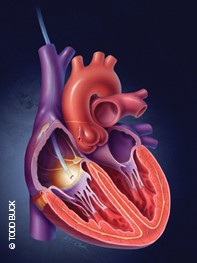Peer Reviewed
Feature Article Cardiovascular medicine
Recent advances in the treatment of atrial fibrillation
Abstract
Atrial fibrillation is the most common cardiac arrhythmia seen in clinical practice, occurring in paroxysmal, persistent or permanent forms. New anti-arrhythmic agents are being trialled for the pharmacological treatment of affected patients. Catheter ablation is an effective therapeutic intervention for the treatment of patients with symptomatic, drug-refractory paroxysmal atrial fibrillation.
Correction A correction for this article was published in the November 2012 issue of Medicine Today. The full text PDF of this article (see link above) has been corrected.
Key Points
- The two main aims of treatment of patients with atrial fibrillation (AF) are symptom control and reduction in thromboembolic risk.
- Once AF has been diagnosed, either a rate control or rhythm control treatment strategy may be reasonable.
- Symptomatic patients often derive much greater symptom relief from rhythm control, which may be achieved pharmacologically or with electric cardioversion.
- The decision to opt for rate control is based on symptoms and likelihood of long-term sinus rhythm maintenance.
- In the small proportion of patients in whom rate control is difficult to achieve pharmacologically, permanent pacing followed by atrioventricular nodal ablation improves symptoms and quality of life.
- Catheter ablation is a highly efficacious strategy for maintaining sinus rhythm in patients with symptomatic paroxysmal AF who have failed one or more anti-arrhythmic drugs.
Purchase the PDF version of this article
Already a subscriber? Login here.

